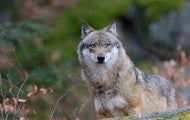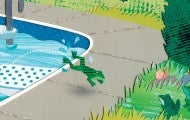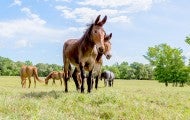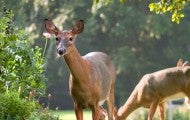Showing 13 of 13 results
A shocking undercover investigation recently conducted in Iowa by the Humane Society of the United States and Humane Society International found what can only be described as a massive garbage bin of the trophy hunting industry. A four-day event where thousands of animals – including at least 557...
It seemed like a good idea at the time: Buy a house with a two-acre property, let our energetic herding dog have the run of the place and spend blissful summer days digging side by side in the dirt with her. And it was blissful, watching Mattie carve out her napping spots behind the ferns and tall...









